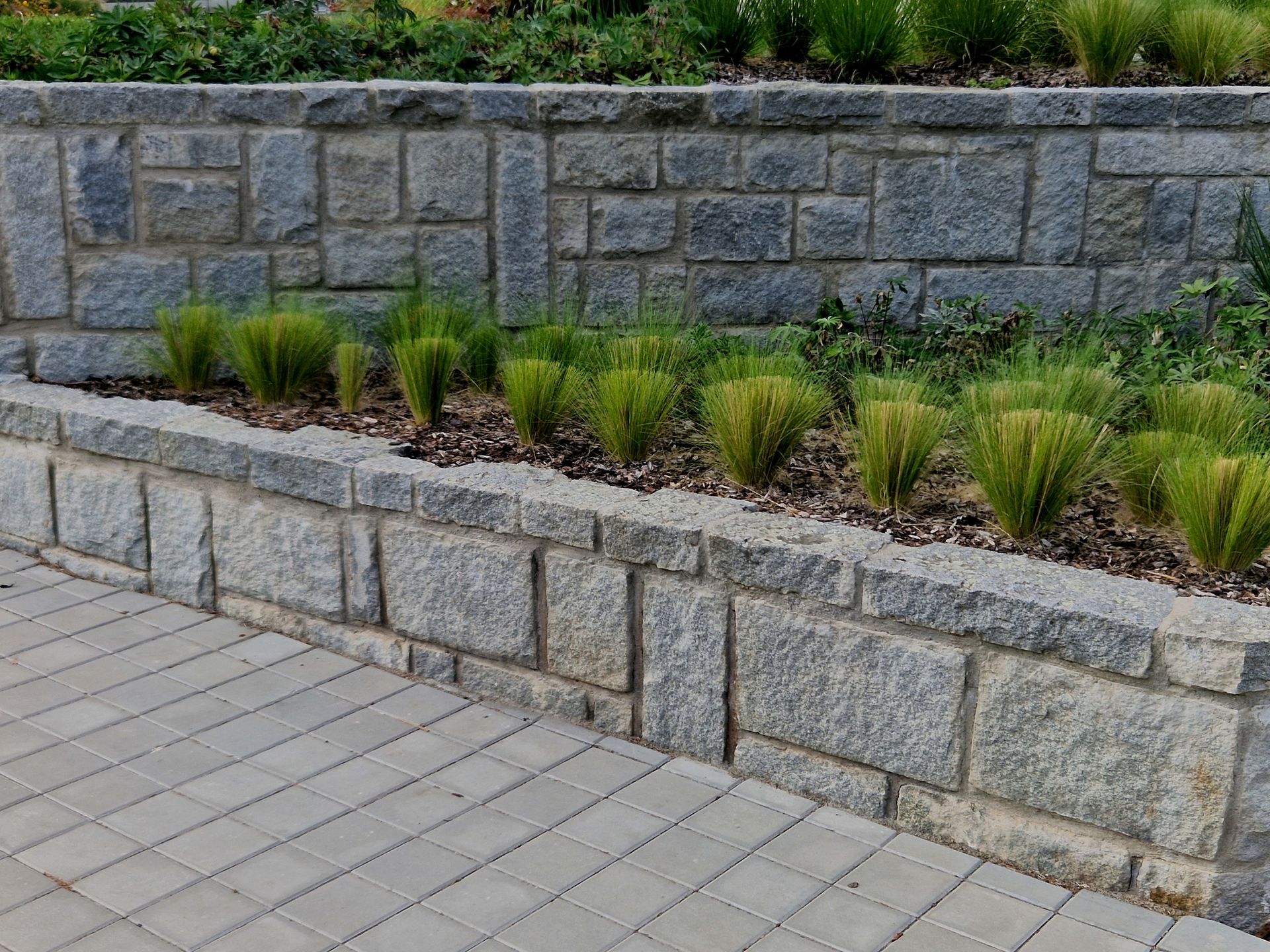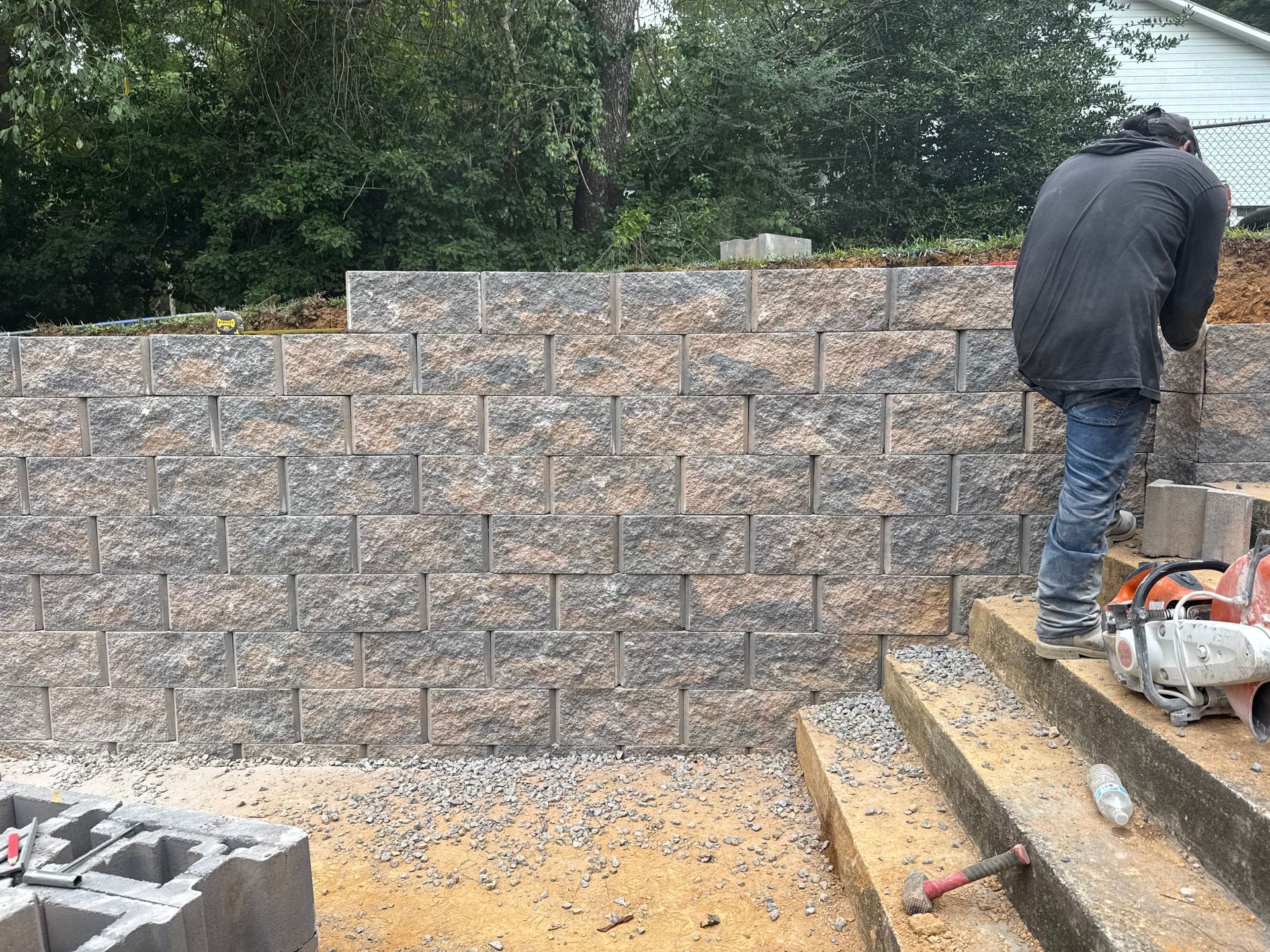When You Need a Retaining Wall
Not every hill needs a wall—but some slopes won’t stay in place without one. If you see erosion, crumbling edges, or puddles that won’t drain, it’s time to call in the concrete.
Yard Slopes Too Steep
Flat yards are easier to use, mow, and walk on. If your property’s hard to manage, a wall can level it out.
Water Runoff Problems
Walls help direct rainwater away from foundations, basements, and walkways. Good drainage starts with good structure.
Cracked or Leaning Old Walls
Timber and block walls fail over time. If you see bulging, cracks, or bowing, it’s not safe. We’ll replace it with something solid.
Our Process—What to Expect
We don’t overcomplicate the work. We look at the slope, check drainage, and figure out the right height and thickness. Then we dig, form, reinforce, pour, and finish. That’s it. No surprises.
Site Inspection
We check for slope angle, water flow, and soil type to figure out how deep and wide your wall needs to be.
Ground Prep
We dig and level the base, add compacted gravel if needed, and make sure everything’s stable before building begins.
Poured and Reinforced
We install forms, place rebar, and pour the wall in a single go. Then we smooth and finish it so it sheds water and looks clean.
Drainage Control
Behind each wall, we add gravel or drain lines to keep pressure down and water moving out.
Maintenance and Longevity
Concrete retaining walls don’t need much. Once they’re sealed and settled, they’re good for the long haul. But here’s how to make sure they keep doing their job.
Watch for Drainage Issues
If water pools at the base or seeps through, drainage might be clogged. We can check and clear it if needed.
Seal Every Few Years
A new coat of sealant every 2–3 years helps keep water out and the surface clean.
Avoid Heavy Machinery Near the Wall
Driving or parking too close can create extra pressure. Leave a buffer zone if you can.
Built to Withstand Real Life, Not Just Appearances
Retaining walls are more than a border or barrier—they’re a structure that has to work under pressure. At CRAGS Property Preservation, LLC, we treat every wall like the foundation it is. Whether it's holding back a steep grade or shaping a new part of your yard, it has to be done with care. That means better prep, tighter formwork, and no rushing the pour. A clean surface may look nice, but it’s what’s behind the wall that makes it last. We don’t cut corners, and we don’t leave you guessing. Just solid work, from start to finish.
FAQs—What People Ask About Retaining Walls
Do you only build with concrete?
Yes. We don’t install timber, block, or stone walls—only poured concrete with reinforcement.
How long does a retaining wall take to build?
Most jobs take 3 to 5 days, depending on the length, height, and weather.
Can you replace my old wall?
Yes. We can remove the old structure, clear the site, and build a new one in its place.
Do you install drainage behind the wall?
Always. Proper drainage is built into every job to prevent water pressure from causing cracks or bulges.
What finishes do you offer?
We keep it simple—smooth or broom finish. If you need sealant, we’ll apply that too.
Pro Tips—Make That Wall Work Harder
1. Don’t plant shrubs right at the base—roots can cause damage.
2. Add gravel along the back for extra drainage.
3. Keep sprinklers pointed away to reduce moisture buildup.
4. Watch for small cracks—early repairs can prevent bigger issues.
5. Clean off leaves and debris in the fall to stop mildew buildup.
Strong Walls Start With the Right Crew
Don’t gamble with erosion or old walls ready to fall. We pour once, pour right, and make it last. If your yard needs real support, we’re here to dig in.












